The following is my journal and guide to the Shodoshima 88 Temple Pilgrimage (小豆島遍路), the smaller sibling of the Shikoku 88 Temple Pilgrimage (四国遍路), which I walked in May 2019.
The guide is split into 8 sections, with Day 0 being the day I travelled from Tokyo to Shodoshima. I’ll be publishing one section per day over the following week and a bit.
Background
I had planned to walk the Shodoshima 88 Pilgrimage in 2018 but had to call it off due to sickness and the terrible flooding which affected the area that summer. I’m really looking forward to the chance to disconnect for a few days while testing myself physically.
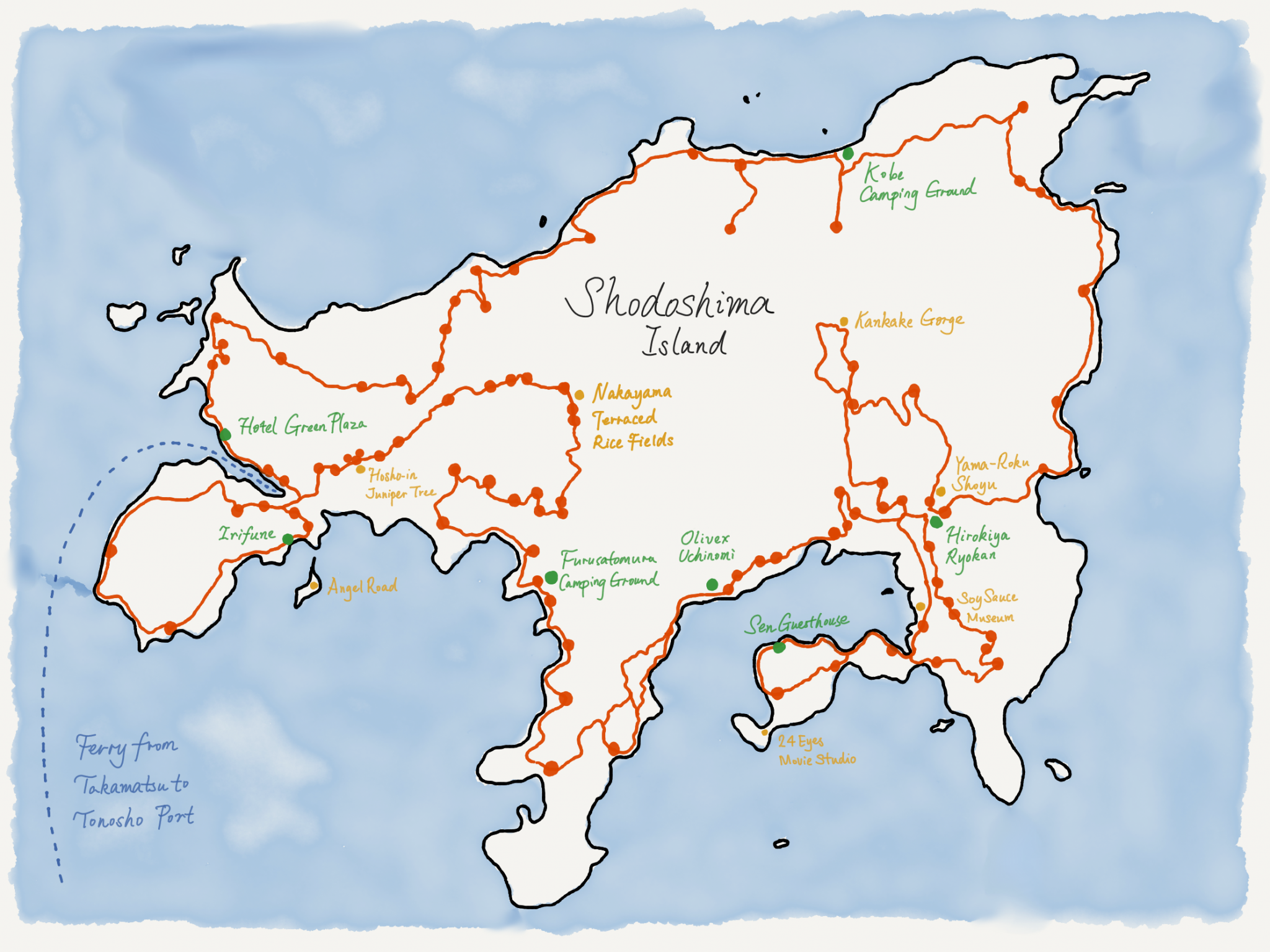
Located in the Seto Inland Sea (瀬戸内海), Shodoshima is a tiny island compared to Shikoku and even more sparsely populated (30 thousand vs 3.8 million).
The circular Shodoshima Pilgrimage trail is only ~180 km long, compared to the Shikoku Pilgrimage which is ~1,400 km. This means it can be completed on foot in 8-10 days if you’re reasonably fit and the weather is on your side.
Some of the trail passes through small towns and fishing villages but much of it hugs the coast or traverses the rugged mountains with fantastic views over the island and the sea.
The largest towns are located around Tonosho Port (土庄港港) to the west and Kusakabe Port (草壁港) to the east but there are hardly any shops or restaurants on the remote northern side of the island.
For this reason, I’m carrying my camping gear which makes my bag considerably heavier (~10 kg). I could have booked accommodation for every night of the trip but fancied a bit of a challenge!
Like with its forebear in Shikoku, the Shodoshima Pilgrimage is connected with Kūkai (空海), also known posthumously as Kōbō-Daishi (弘法大師), the monk who founded Shingon Buddhism in the 9th century. He was born and spent time just across the water in Shikoku, and Shodoshima would have been a stopping-off point from there to the capital. While on the island he sought out sacred spots of the island to engage in ascetic practices, and it is these places that form the core of the pilgrimage.
Despite the name, there are actually 94 sacred sites to be visited along the pilgrim trail. Many of them are not “proper” temples but rather small shrines maintained by locals and housed in rudimentary buildings. What makes the pilgrimage somewhat unique, are a number of temples built into mountain caves that were originally used as remote training grounds.
There is no requisite to being a Buddhist to follow the pilgrimage but be mindful of your behaviour, especially when visiting the temples.
Preflight
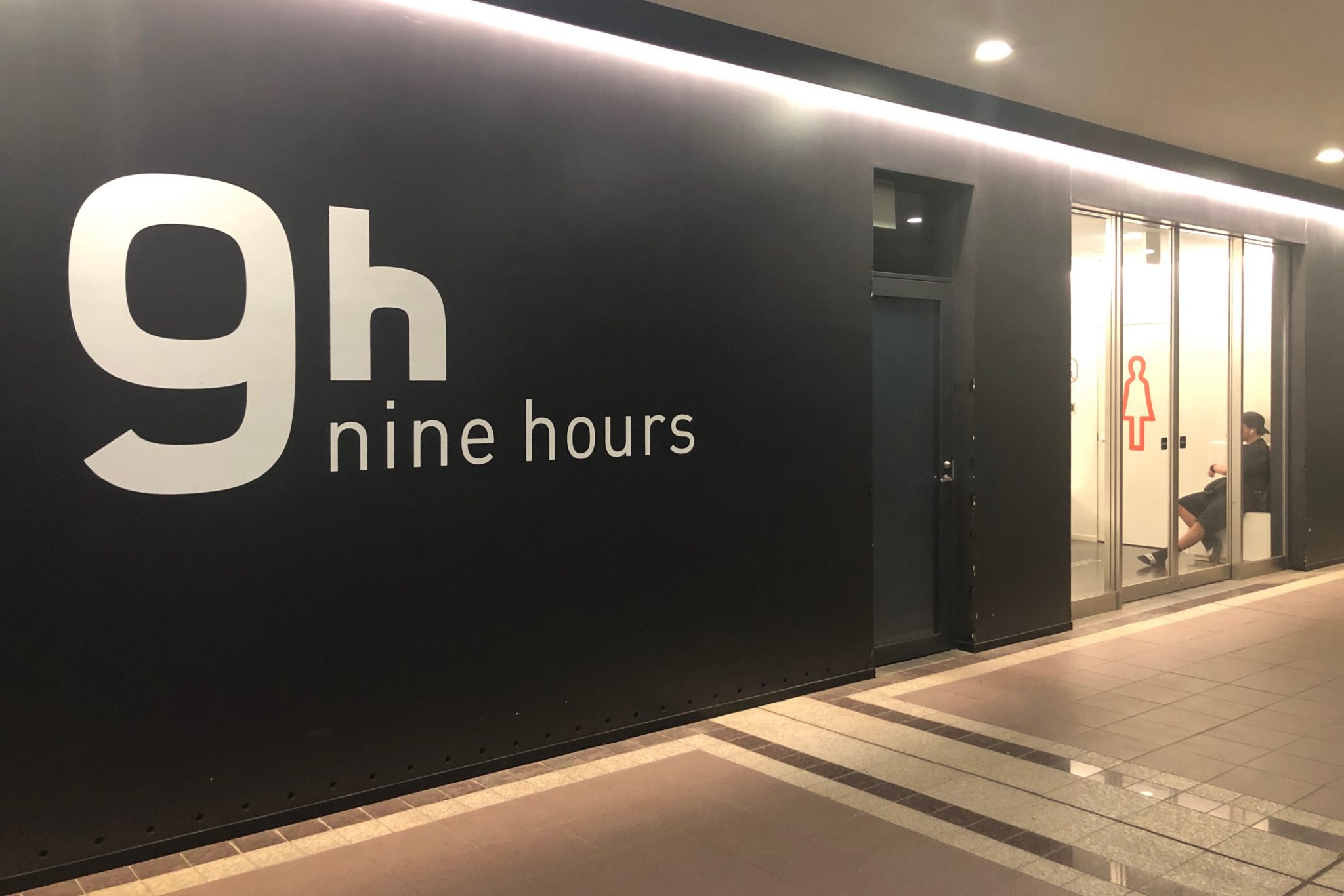
Owing to my early flight tomorrow, I am staying overnight in the nine hours capsule hotel at Narita Airport. Contrary to what you might imagine, the capsules are fairly spacious and the feeling of being inside an enclosed space isn’t too claustrophobic.
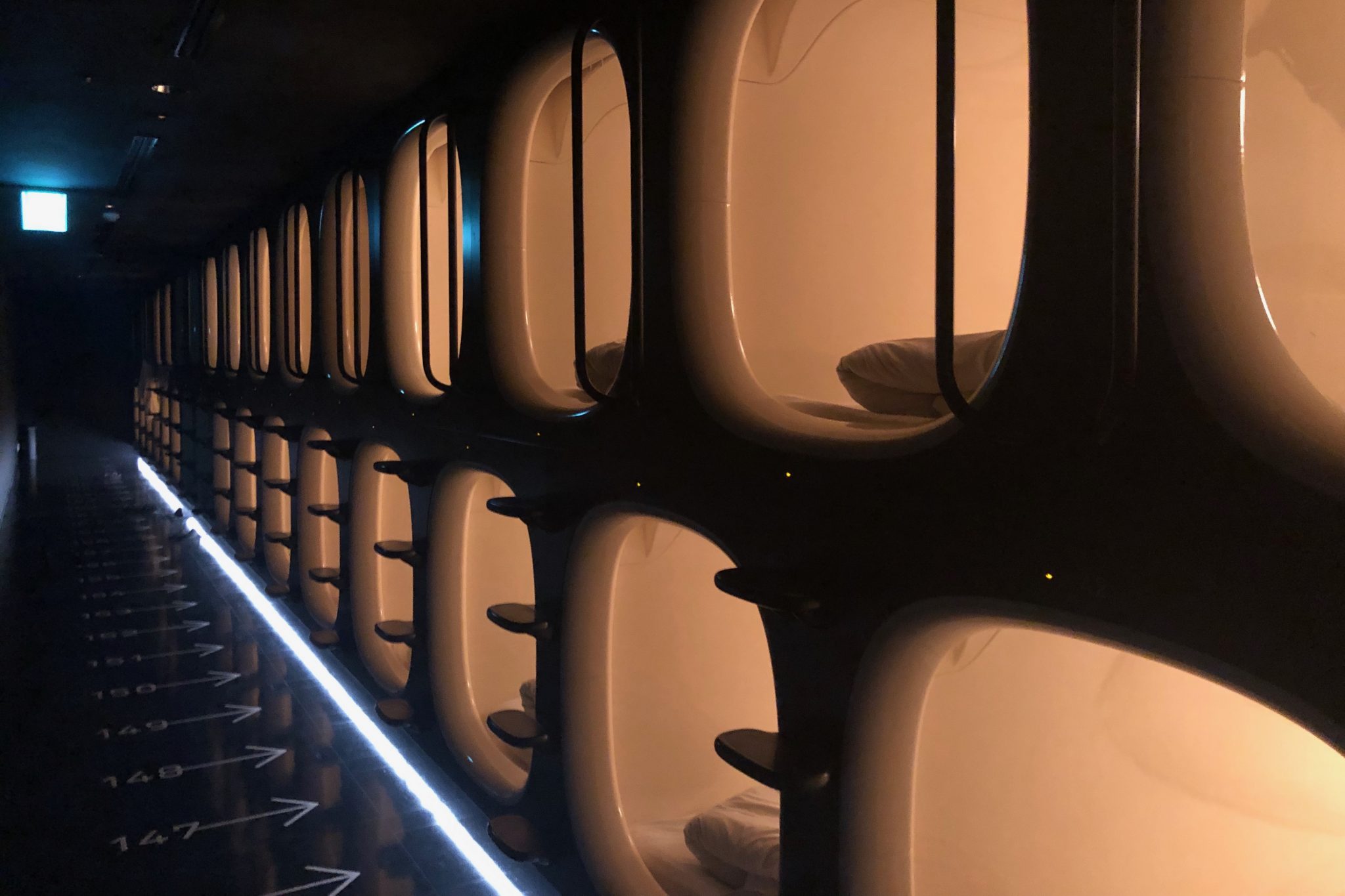
The grey pajamas you wear here make me feel like an extra in the movie THX 1138.
Tokyo → Takamatsu → Shodoshima
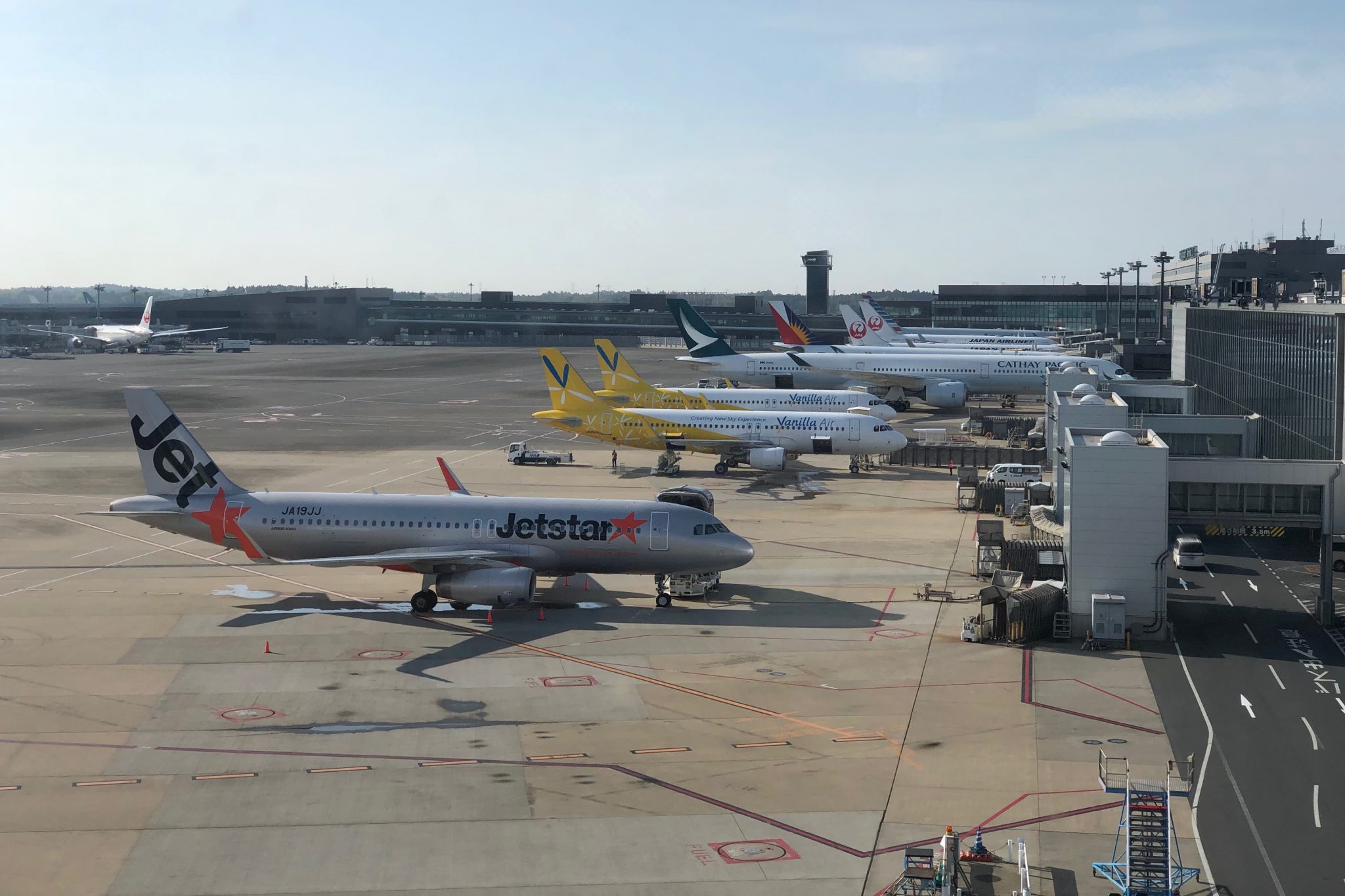
The plane banked sharply on its approach to Takamatsu airport, disconcertingly buffered by strong winds. I listened to some classical music to calm my nerves as we touched back down on solid ground.
I took the limousine bus to downtown Takamatsu in search of camping gas but unfortunately, the shop I had researched didn’t have any so I had to take another bus 30 mins to a Montbell store within a shopping mall. Afterwards, I was able to retrace my steps fairly swiftly.
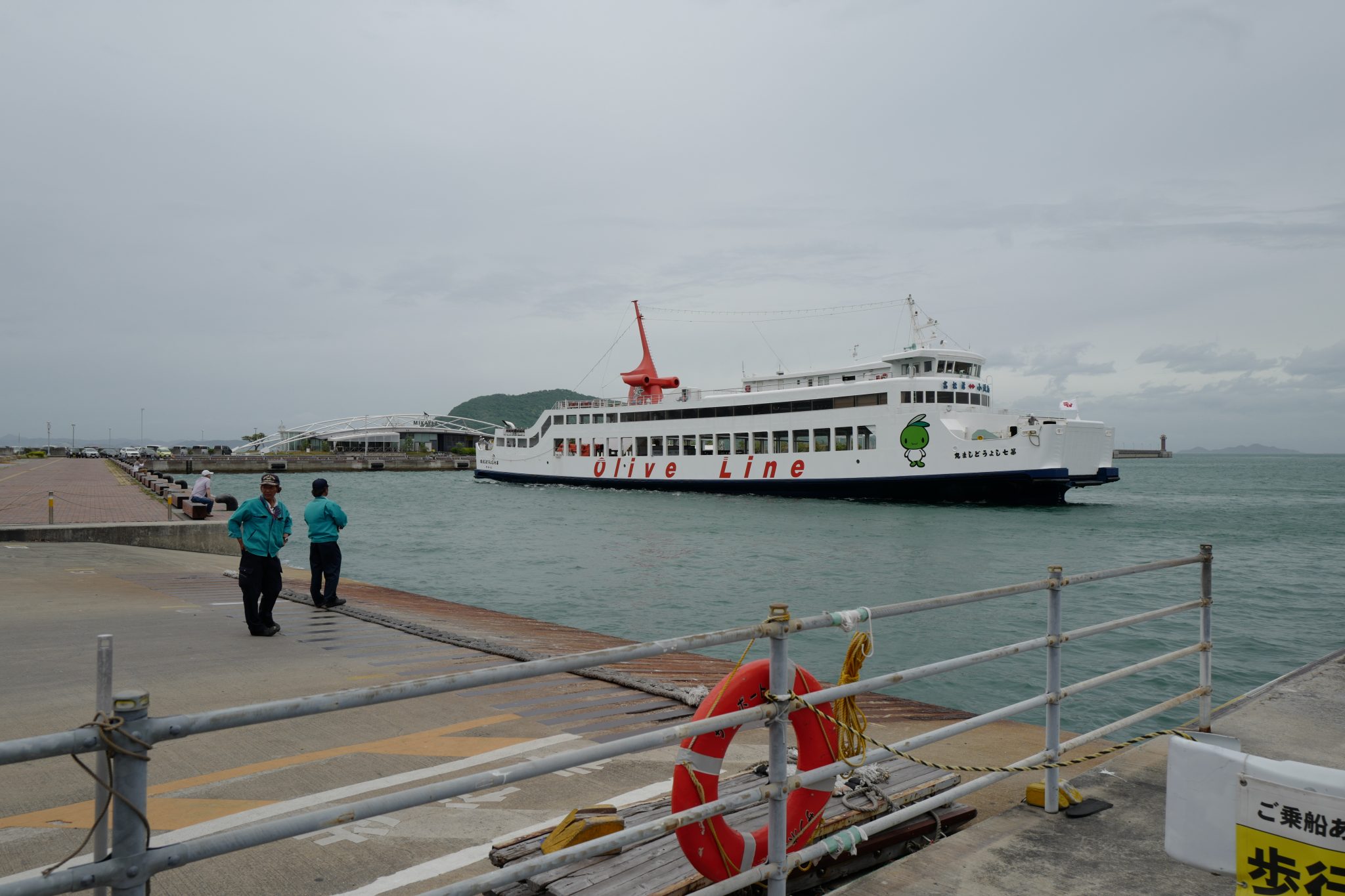

To get to Shodoshima (Tonosho Port) from Takamatsu you can take either a ferry (60 mins) or a high-speed boat (35 mins) which is a bit more expensive (see the FAQ for timetables). I wasn’t in a rush so opted for the 12.35 ferry.
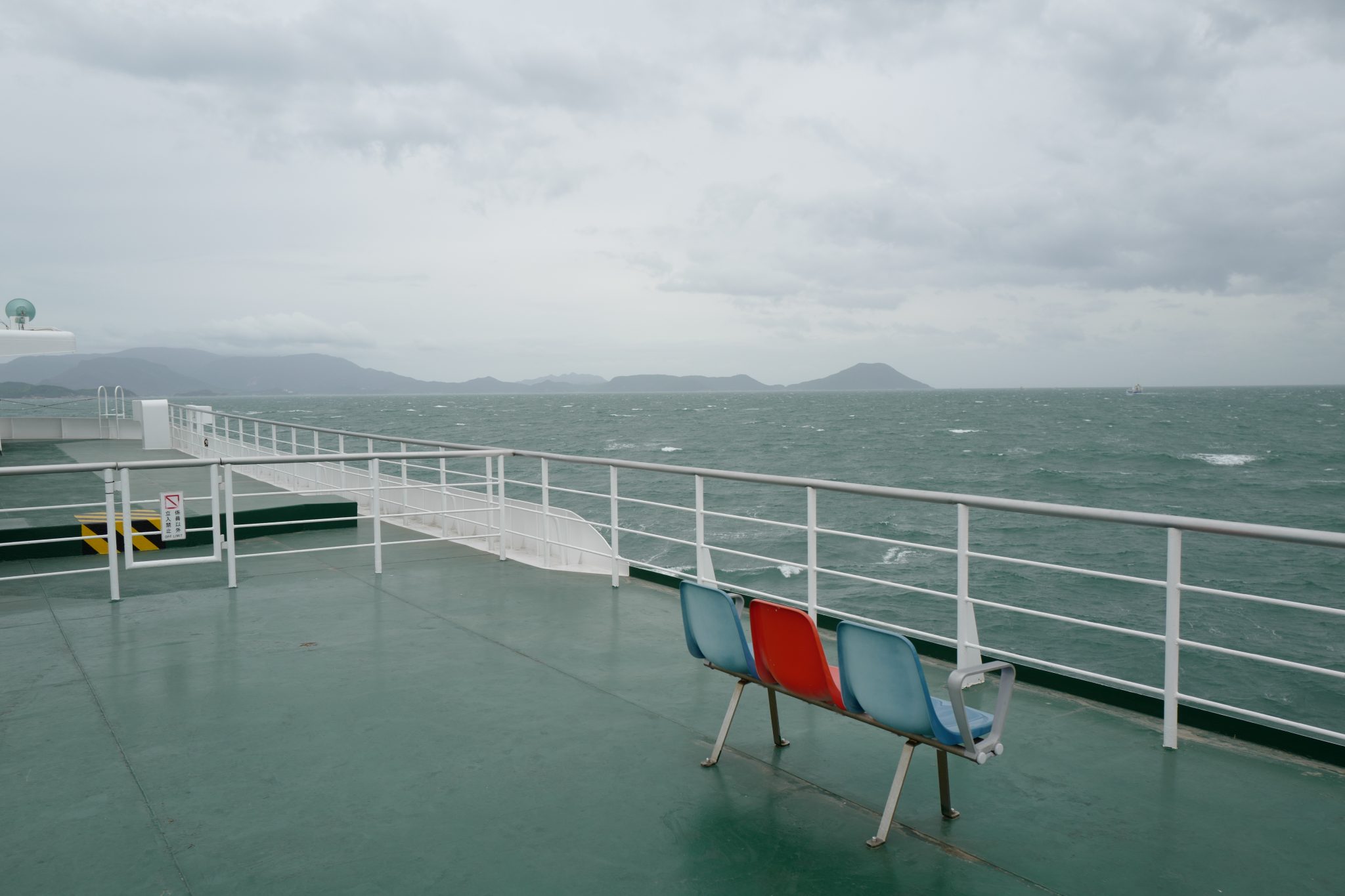
By now the winds had really picked up to the extent that standing on deck didn’t feel particularly safe. I headed below to find a comfortable chair. The journey reminded me of another ferry trip I took many years ago to Green Island in Taiwan which got a bit ugly. I managed to hold onto my lunch.

This year, the surrounding islands are holding their tri-annual art festival which consists of large installations dotted around each. It’s a huge draw for tourists and a key part of government schemes trying to revitalise the local economy.
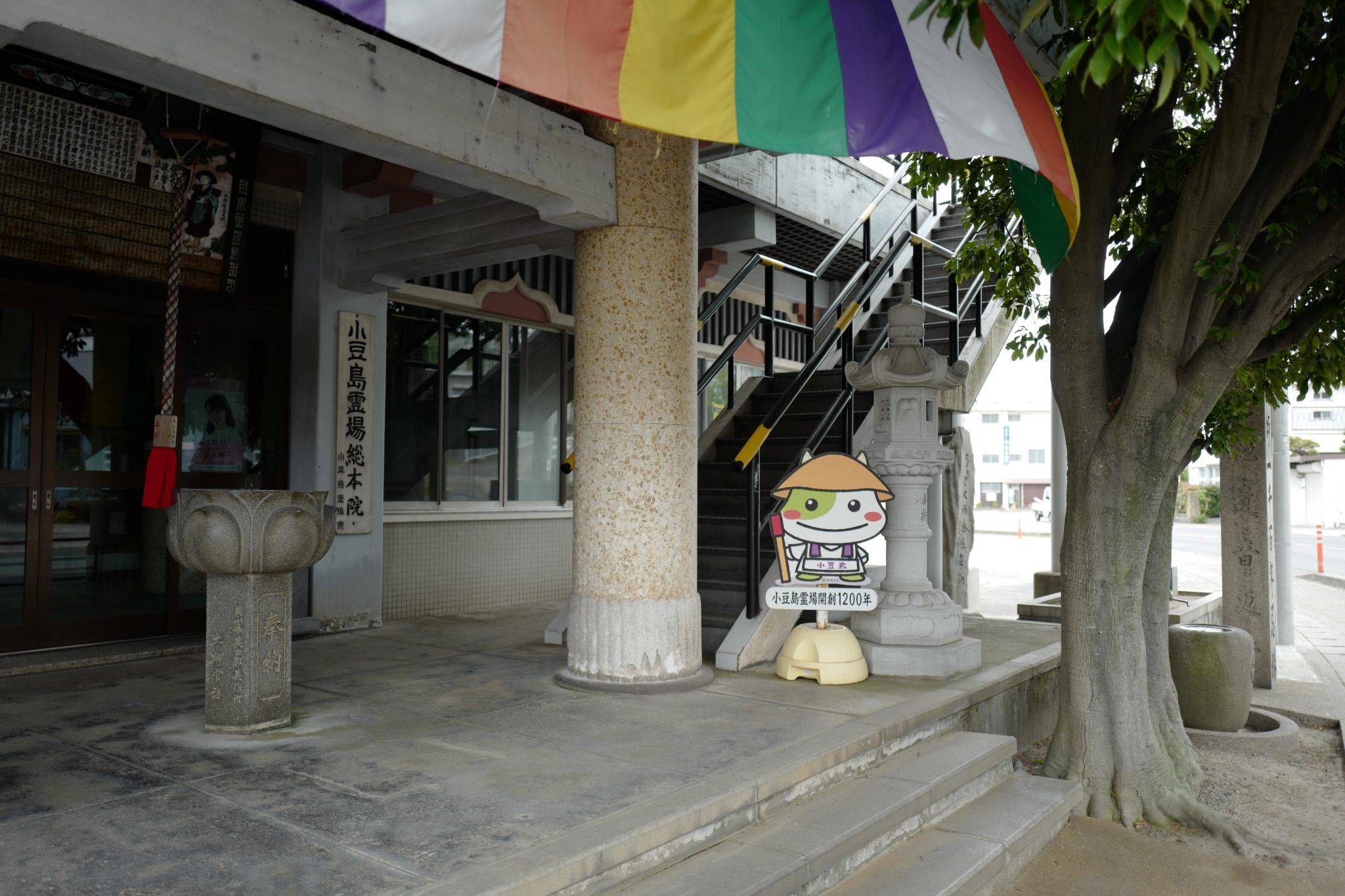
I walked about 10 minutes to the head temple of the Shodoshima 88 association where I picked up a new nokyocho (stamp book) and osamefuda (name slips). The monk in charge was a friendly man who kindly took the time to explain everything to me, though I couldn’t understand it all.
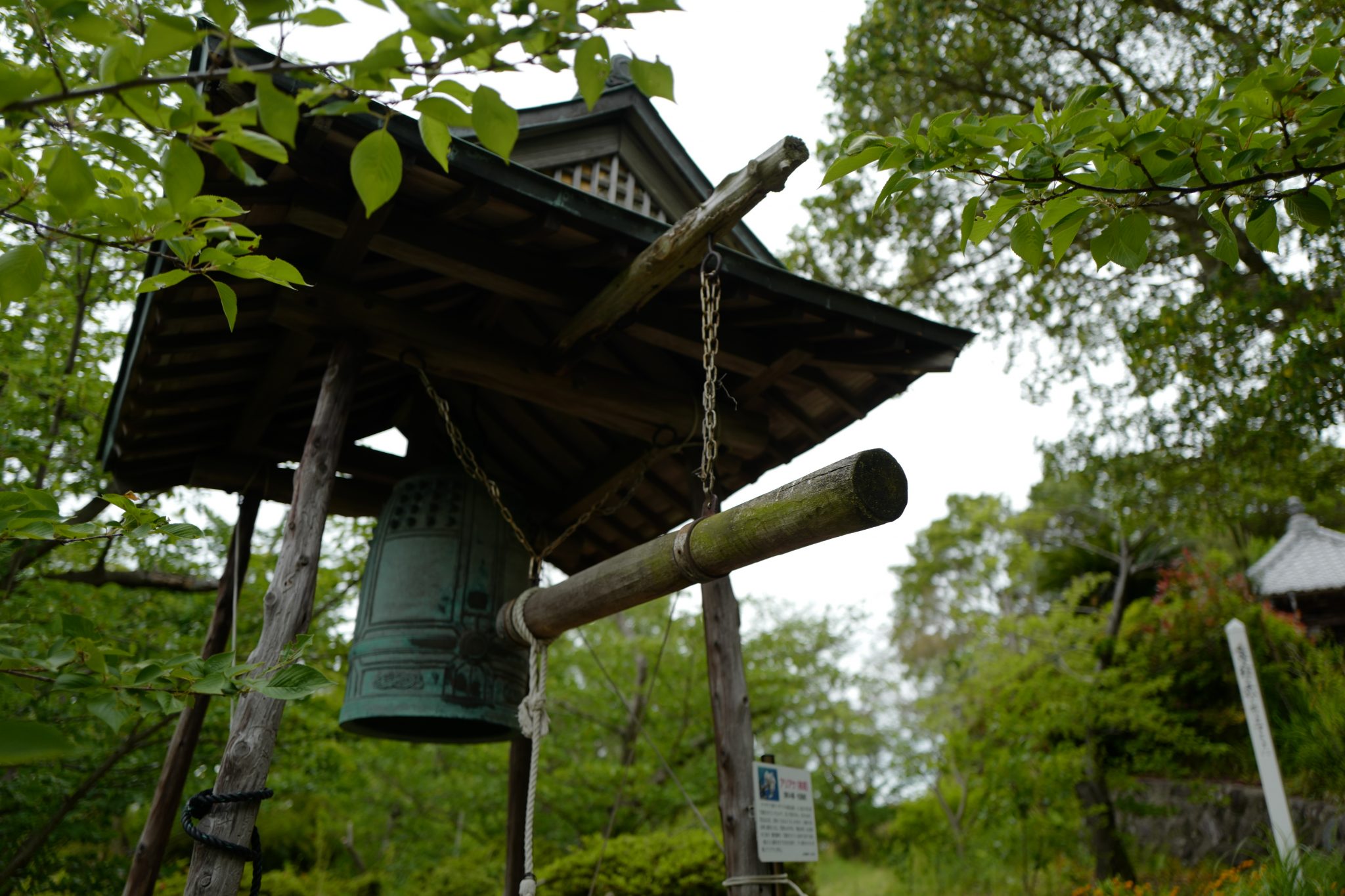
Nearby I visited my first temple, Shoufu-an (wind from pine tree) (松風庵 – 64). Due to various historical oddities, the ordering of the temples doesn’t ascend in exact numerical order so you need to pay a little more attention to the map. Since many of the temples are small and don’t have full-time staff, you get your nokchyo stamped the appropriate number of times at the larger temples.
For a full list of the temples and more information about the stamps see the FAQ.

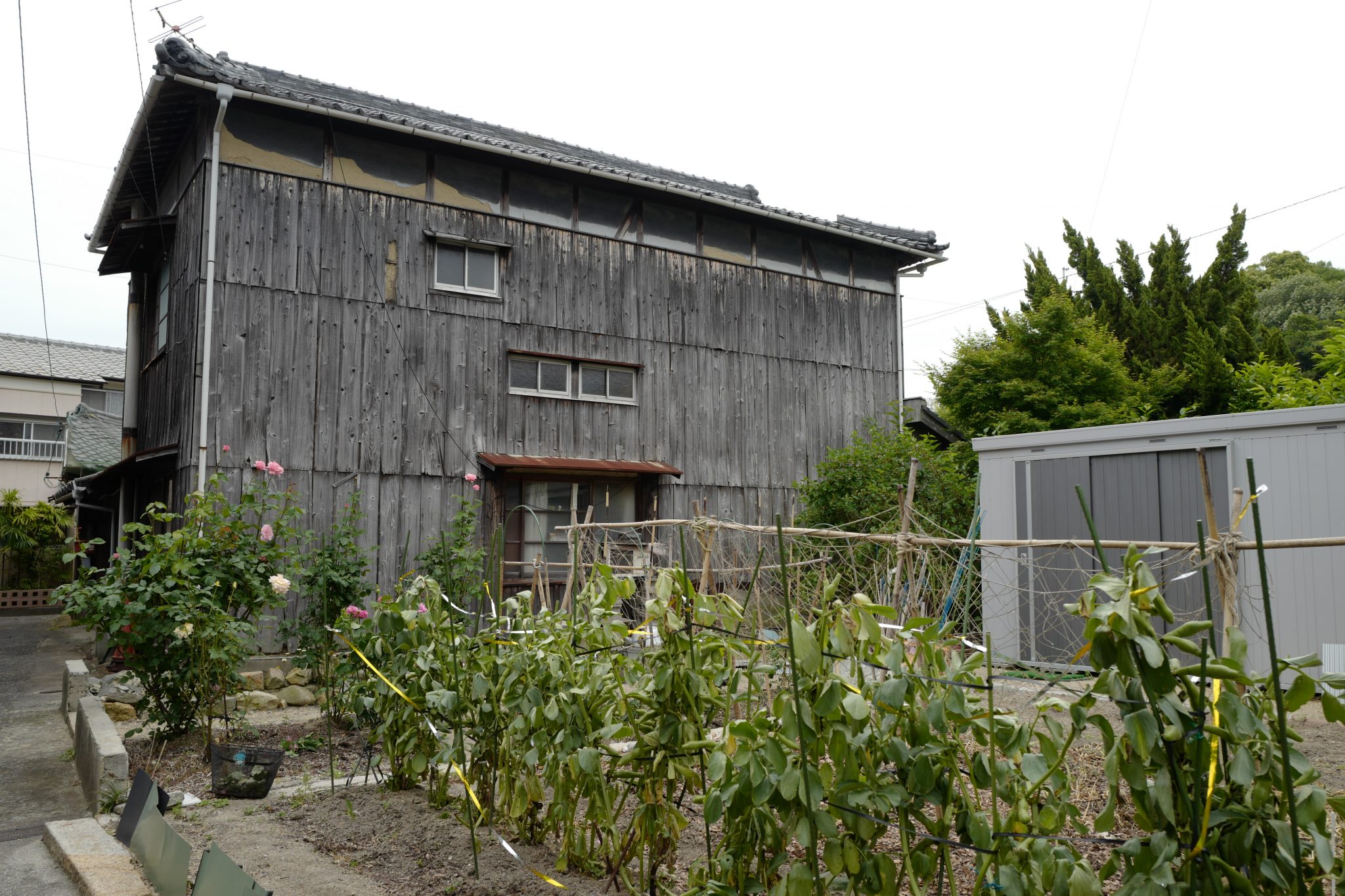
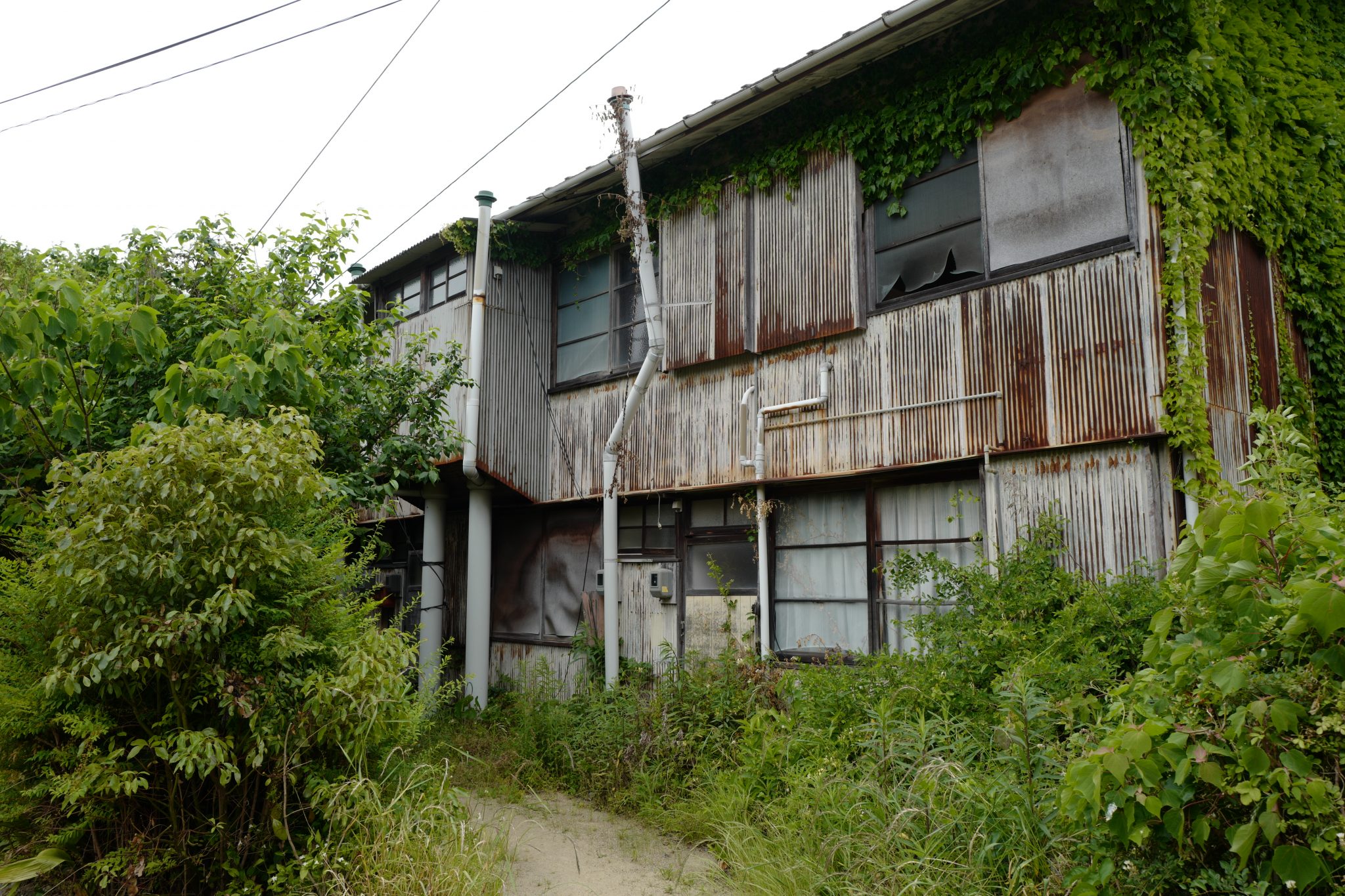
The walk through the centre of Tonosho took me through some very quaint old streets, known locally as Meiro no Machi (迷路のまち) or maze town, where both the buildings and their remaining inhabitants are not getting any younger, yet maintain a quiet dignity.
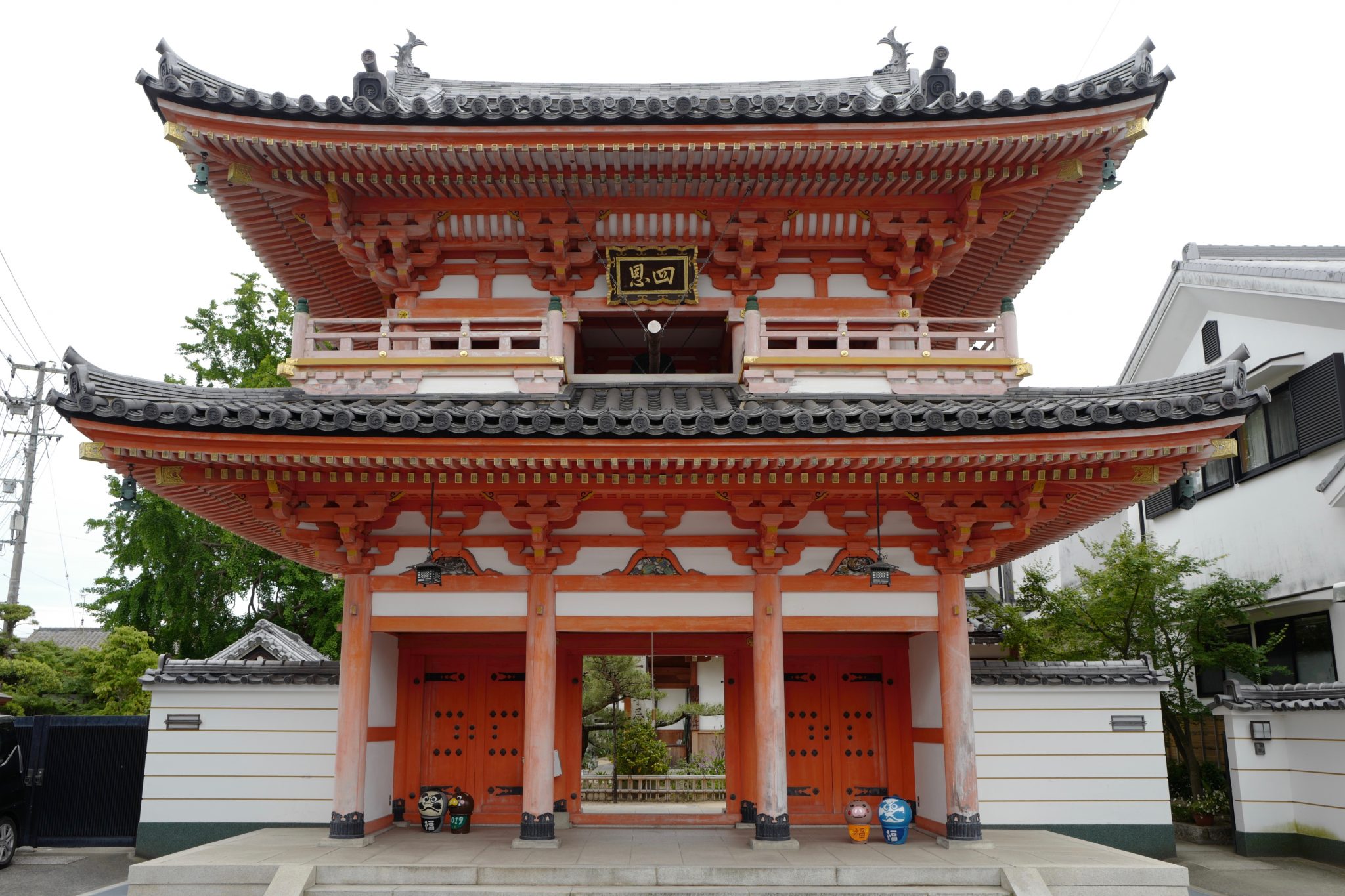
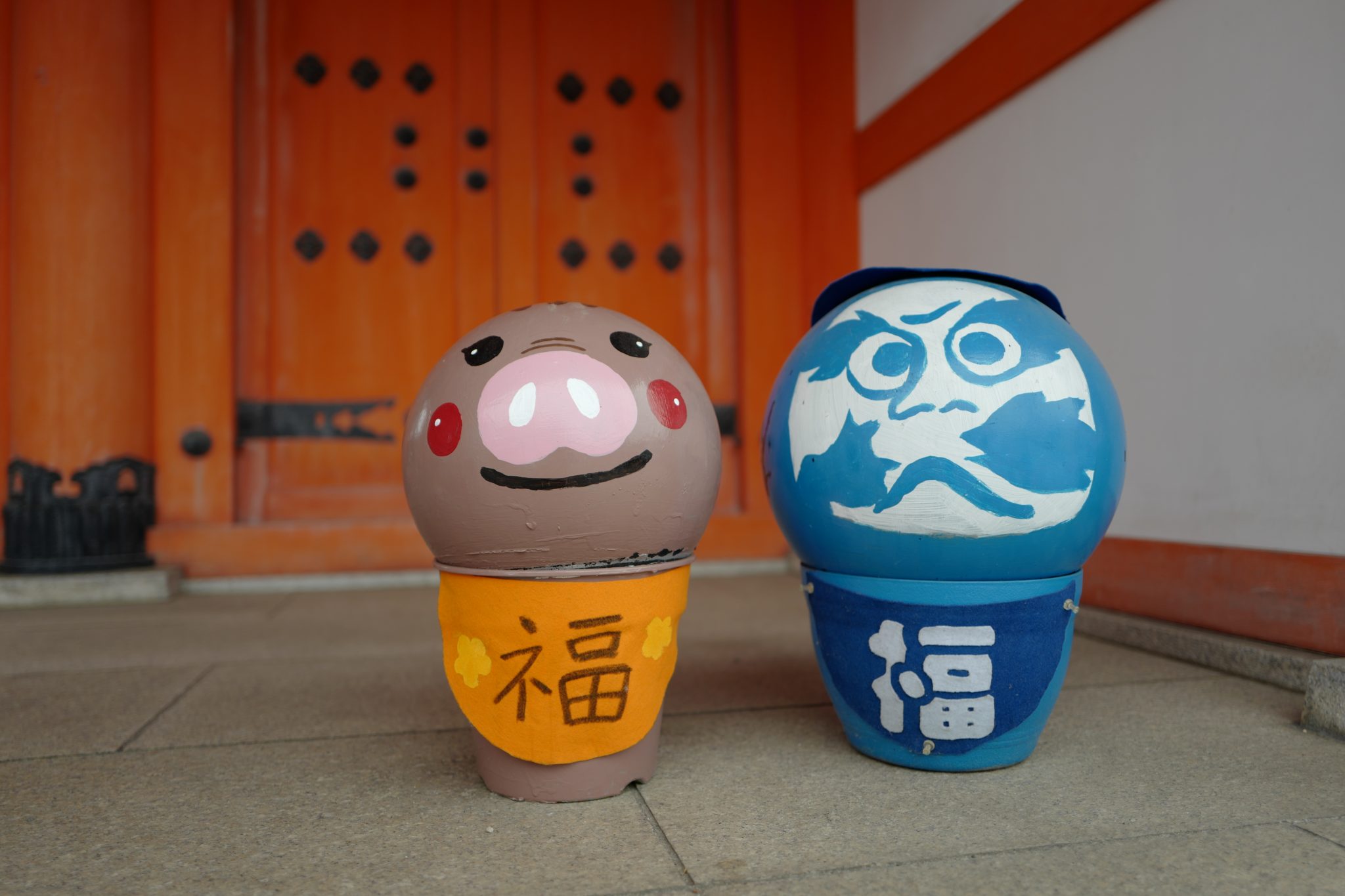
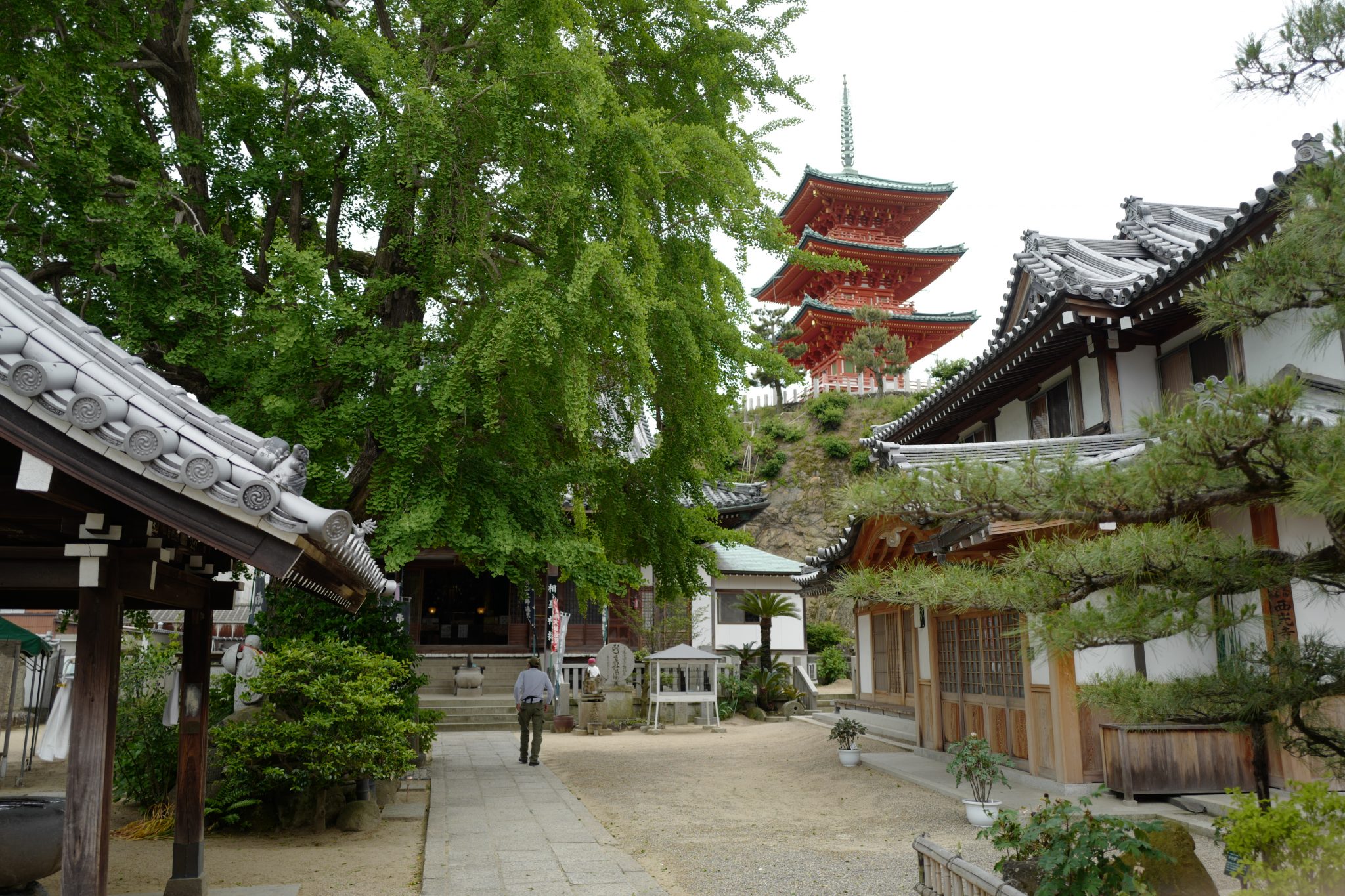

Saikou-ji (西光寺 – 58) was the first large temple I visited where I received no less than 8 stamps from another kind monk who gave me a gift and wrote some beautiful calligraphy on it (“May your 10,000 wishes come true”).
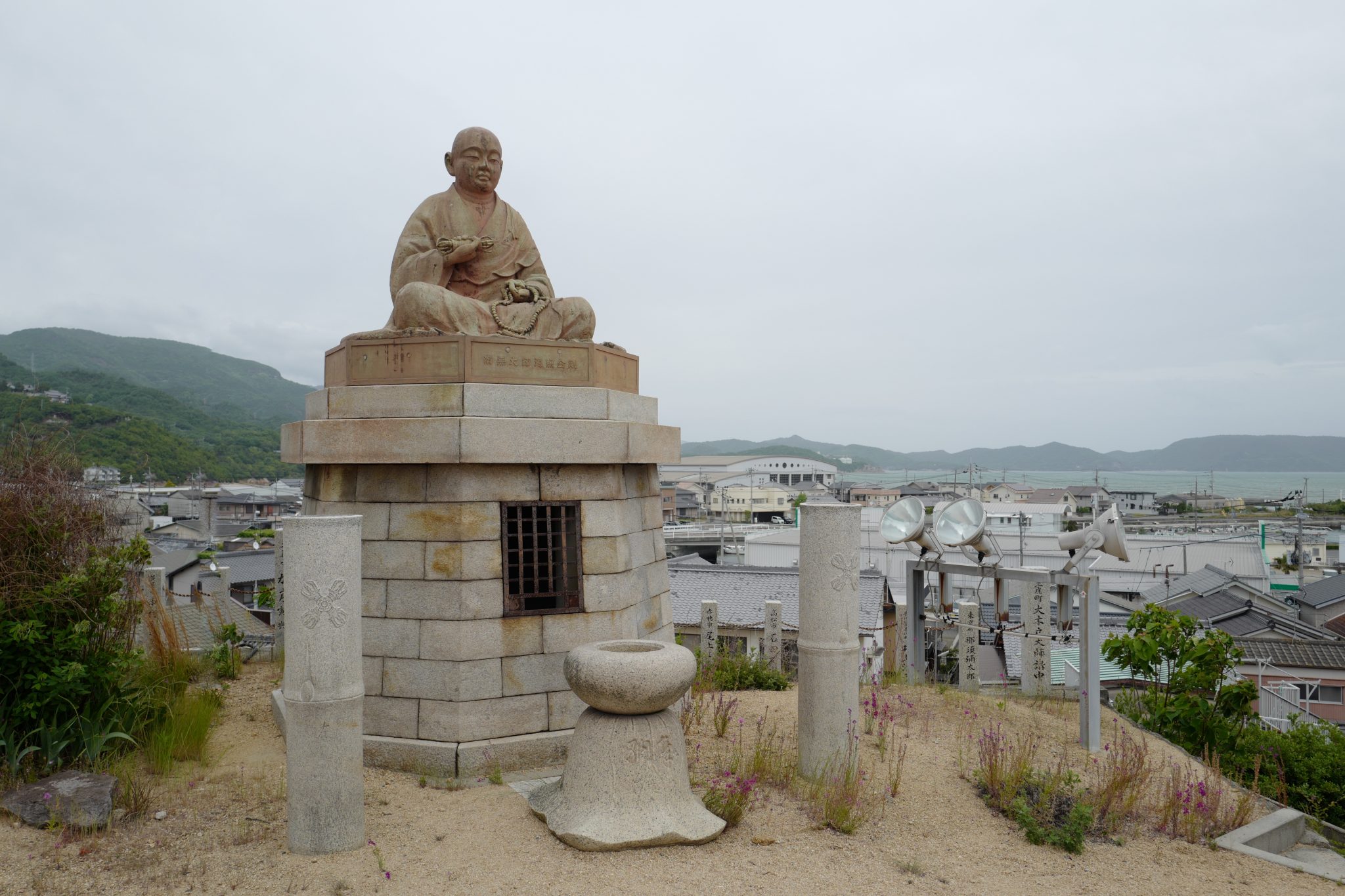
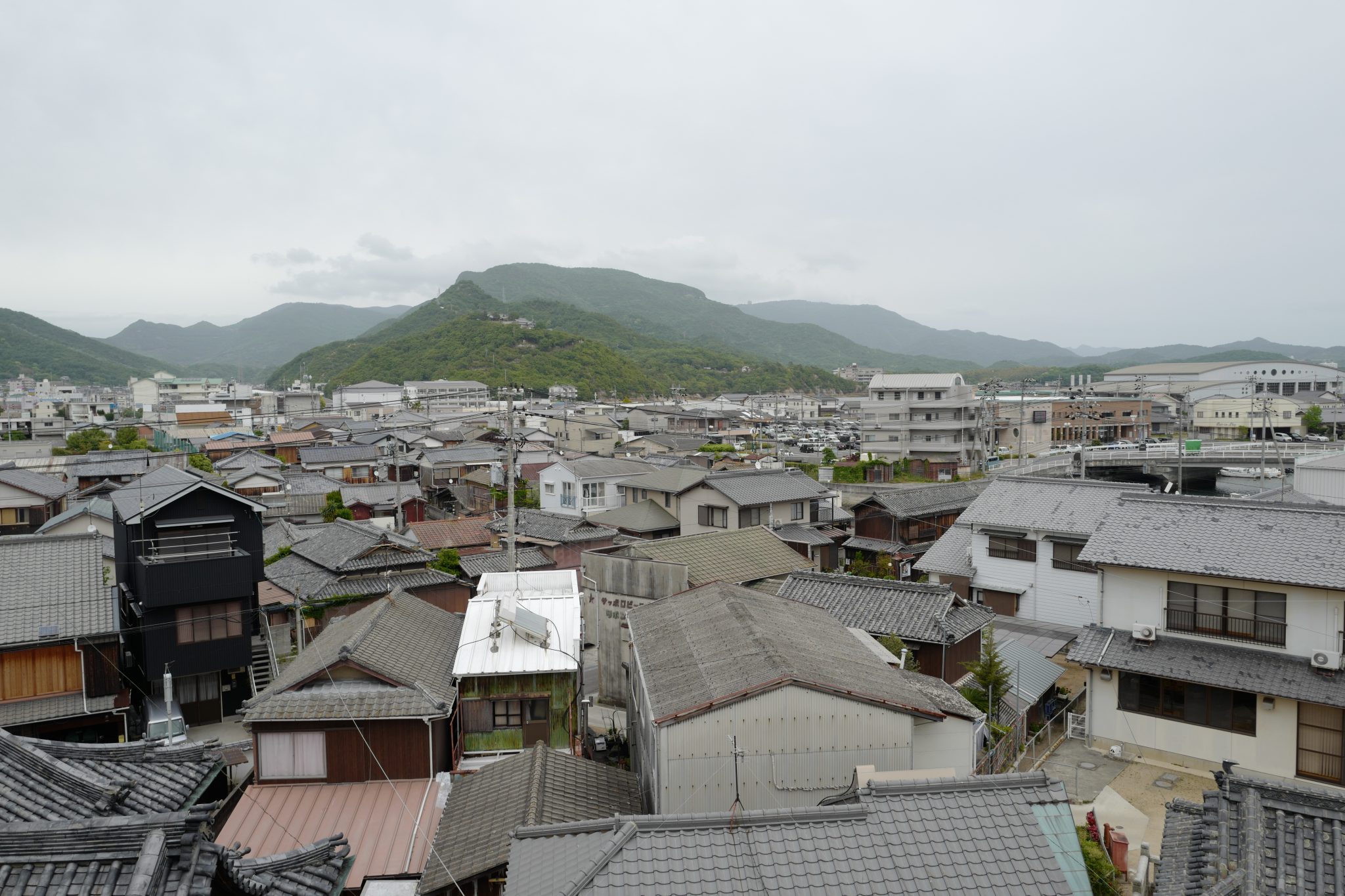
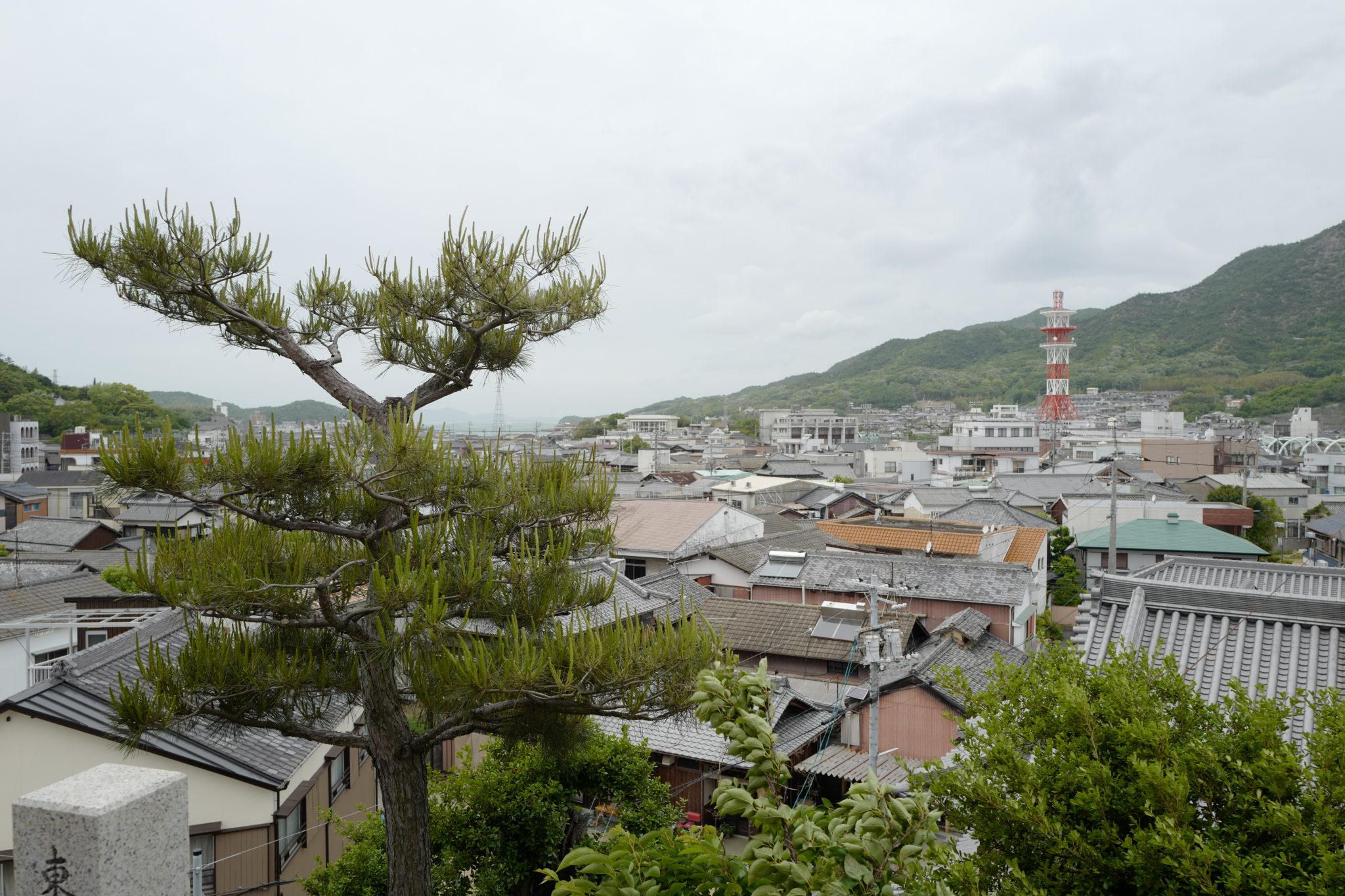
The pagoda on the hill behind the main hall is Seikou-ji Okunoin Oath Tower (西光寺奥之院 誓願之塔 – 58). An okunoin is the “inner sanctuary” of a temple which houses a deity. It is considered the heart of the main temple and is usually placed on the top of a nearby mountain.
Historically temples were predominantly placed in the mountains as a place for quiet practice away from everyday life. When Buddhism became more important in peoples lives, it was inconvenient for people to travel into the mountains so they were relocated into towns and villages. Okunoin’s are often the original place where the temple was opened.
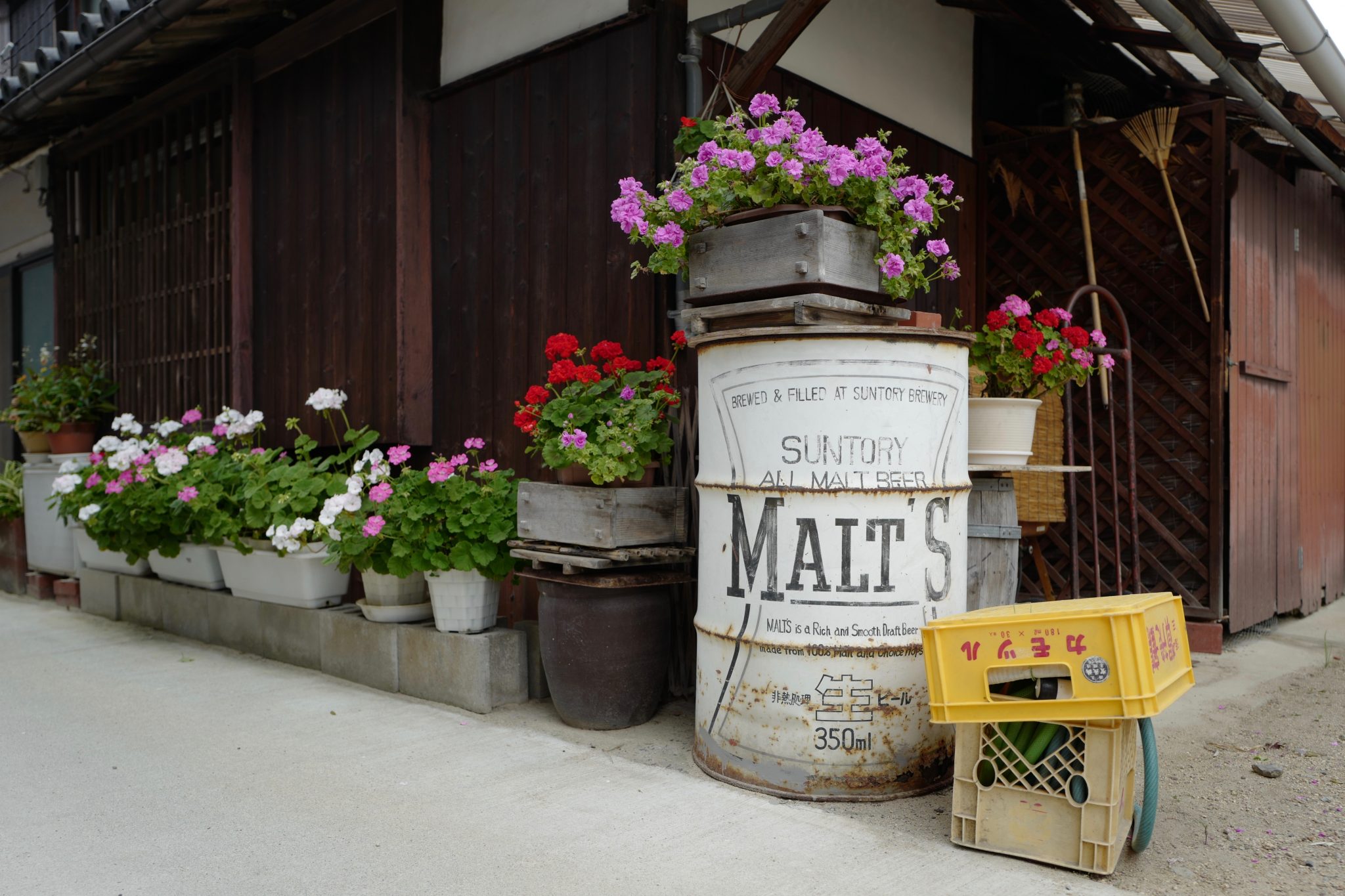
From the temple, it was a short walk to Irifune (海辺の宿 入舟) where I was staying for the night. Like countless other hotels in Japan, the rooms were a little faded but have been well maintained and many have a sea view. The only other guests I spotted appeared to be crews of construction workers.
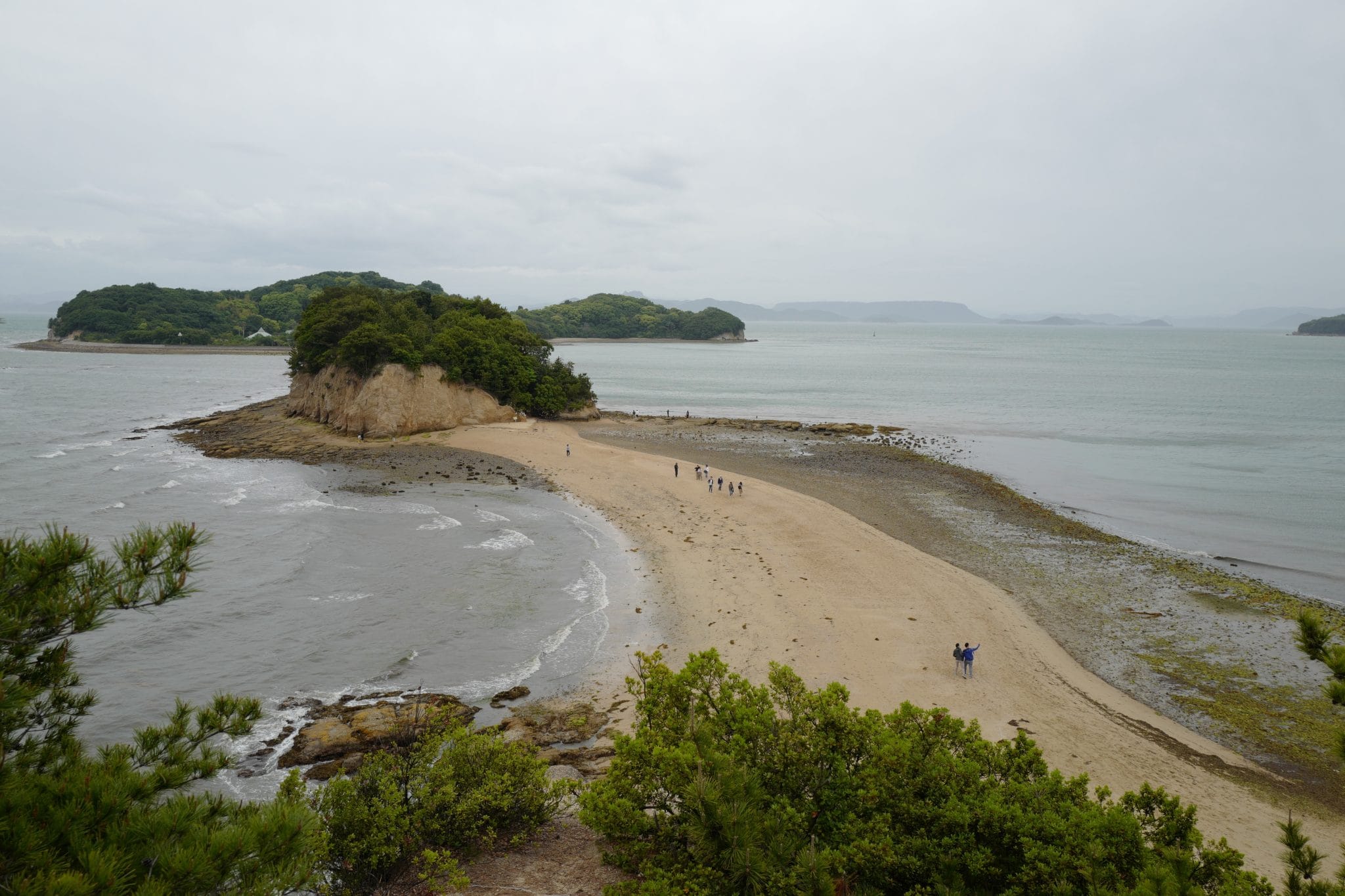
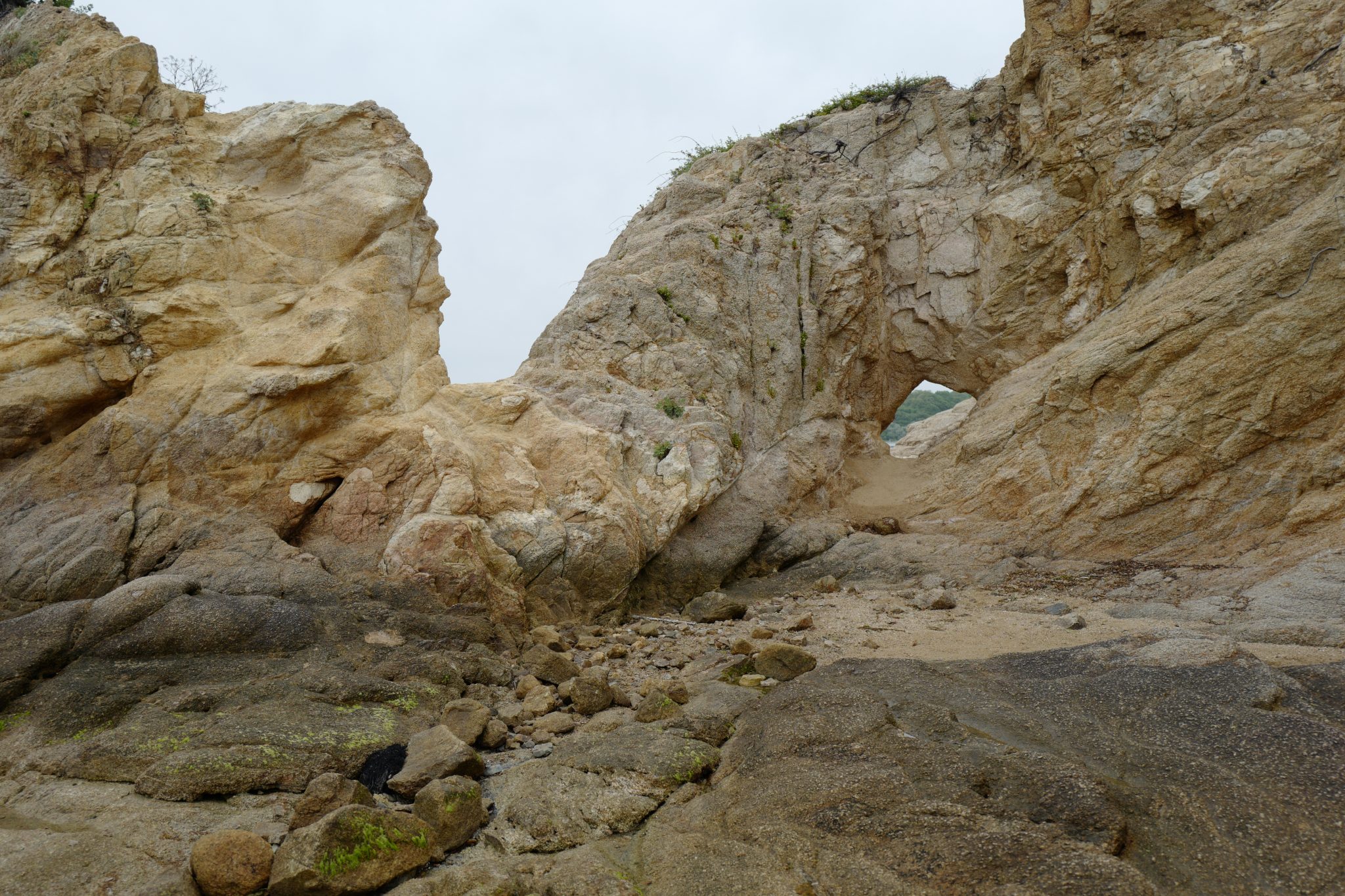
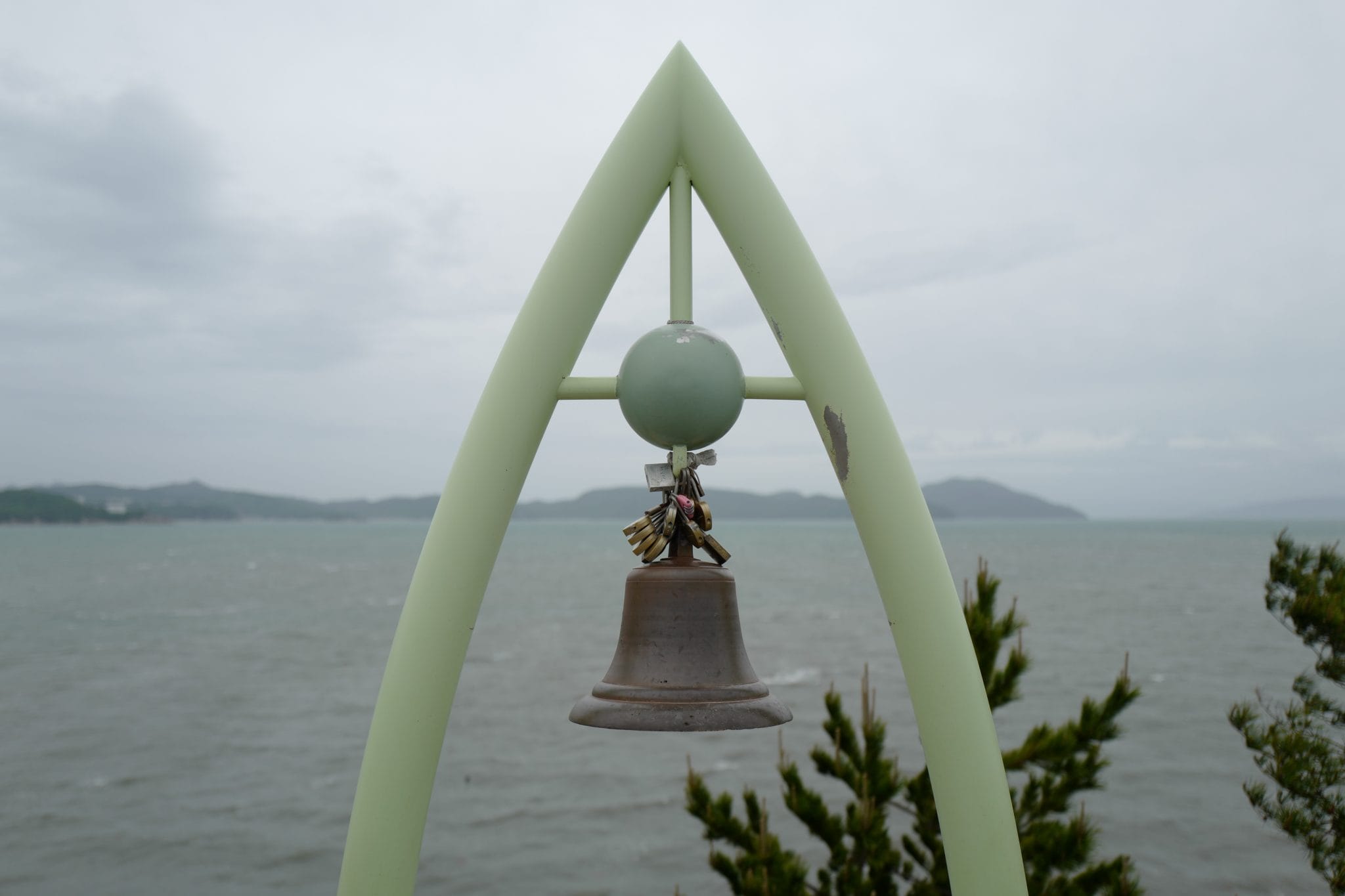
After checking in, I went for a wander to check out Angel Road (エンジェルロード) which is a sand spit connecting a series of small islands at low tide. It is said that couples who walk along it will have a long-lasting relationship.
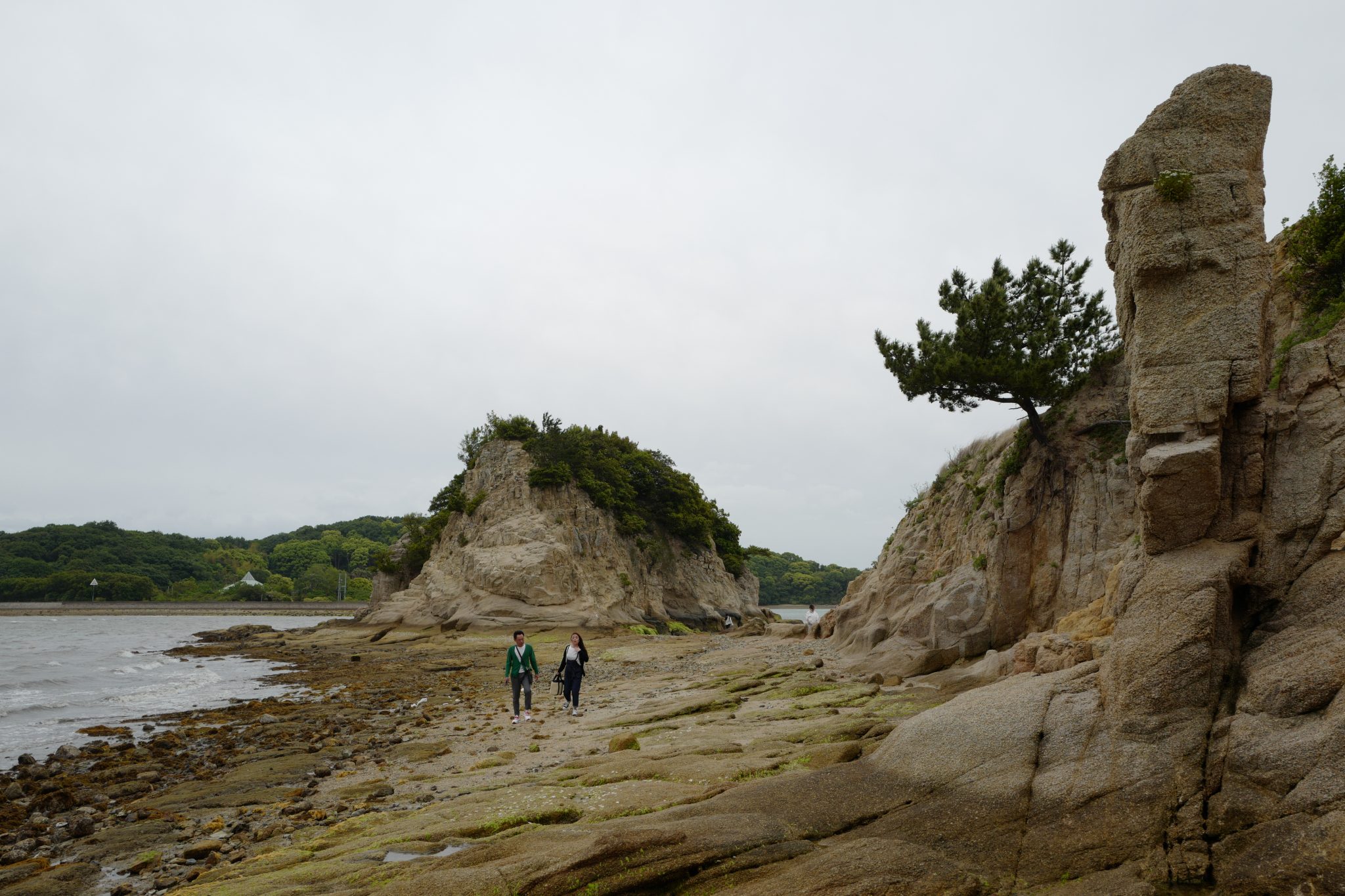
I walked from one end to the other and back on my lonesome but the gale-force winds made it a rather abrasive experience!
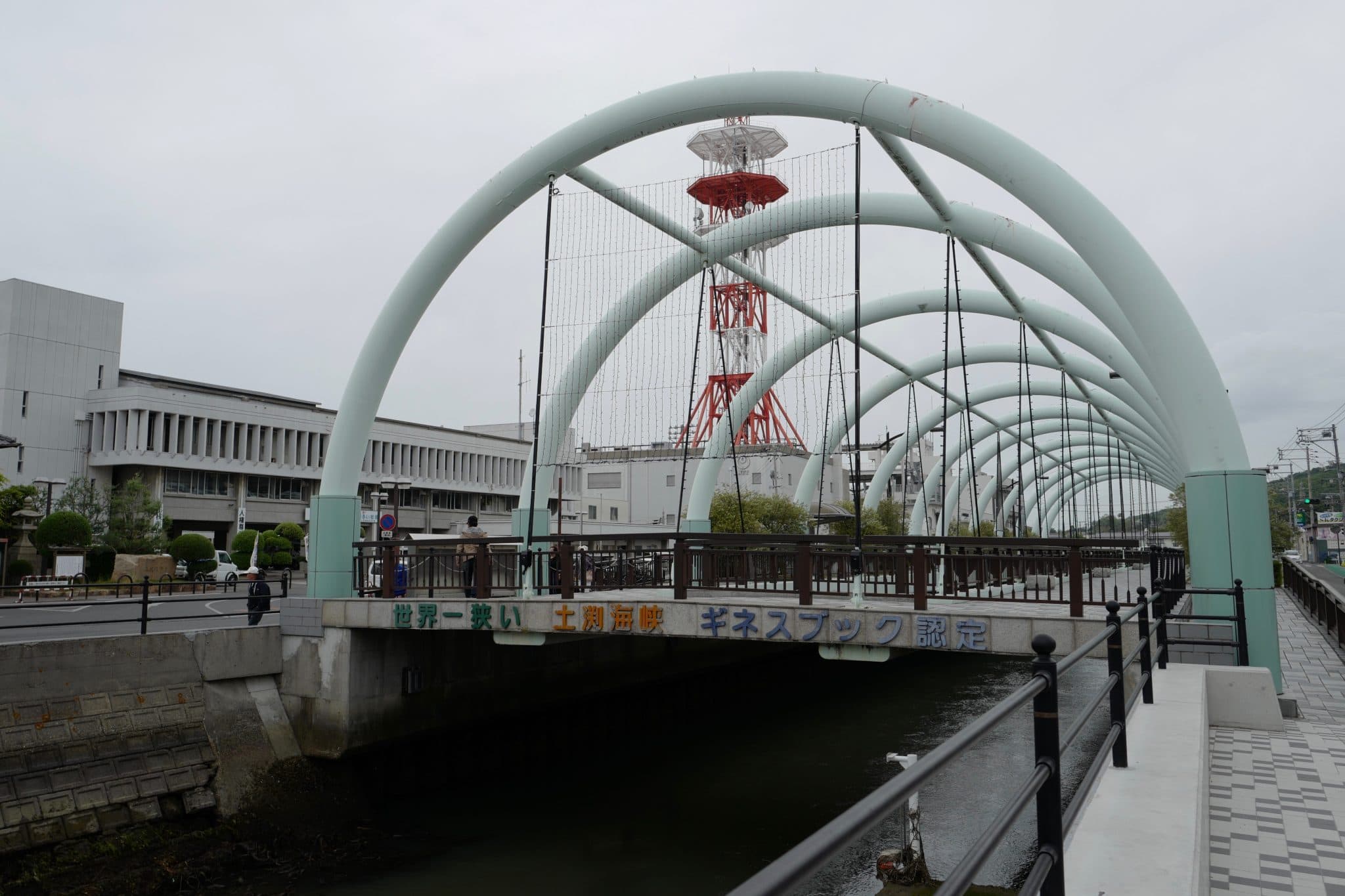
Shodoshima is actually composed of two islands in close proximity—the main island and a smaller one called Maejima (前島). The Dofuchi Strait (土渕海峡), which divides the islands, has been certified as the narrowest in the world by the Guinness Book of World Records.
In preparation for the next couple of days, I went to check out a nearby supermarket to ensure I could get all the supplies I would need.
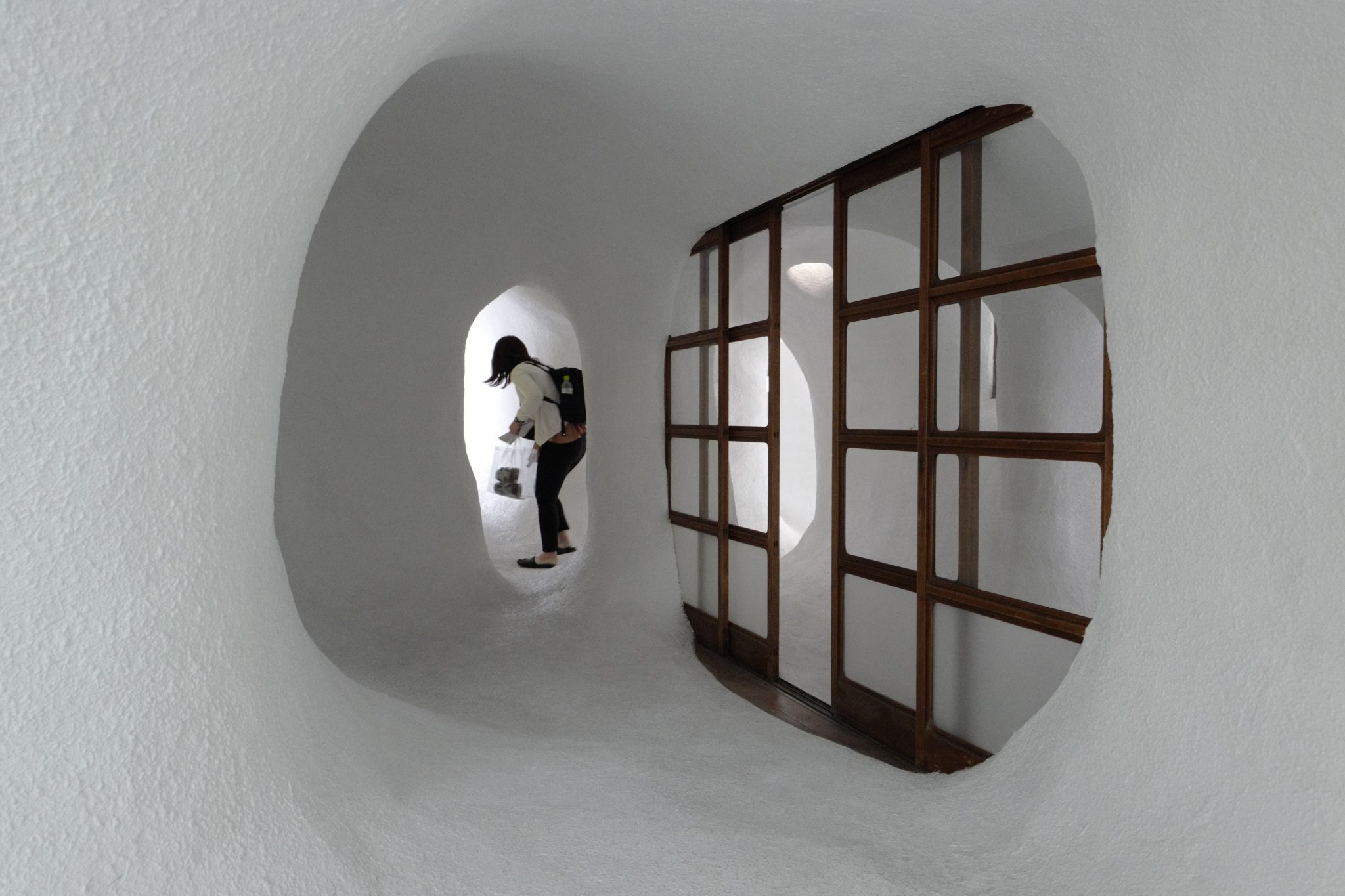
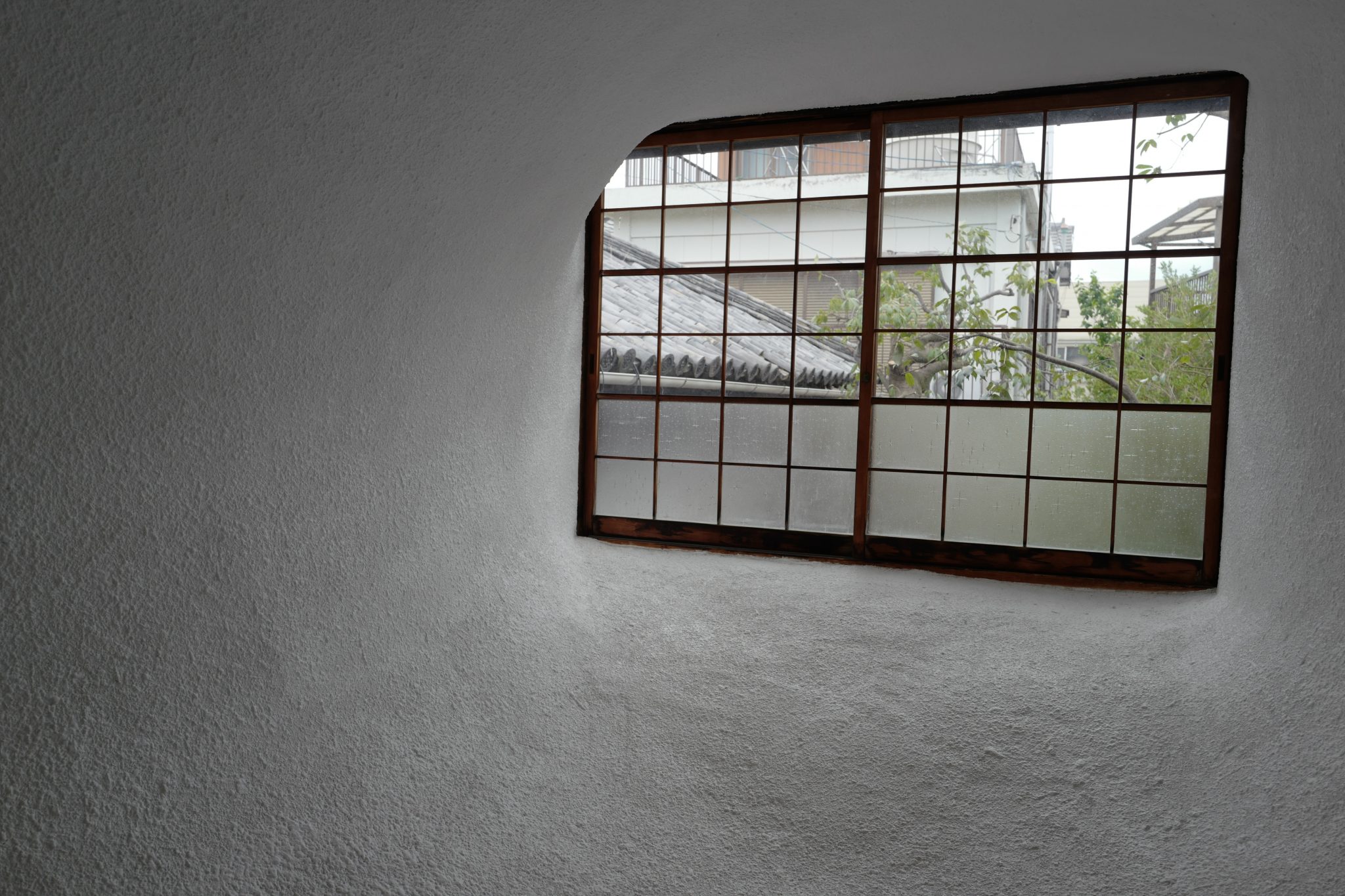
Afterwards, I wandered around the labyrinth of streets and stumbled across another “encapsulated house” like the one I saw at the Kita Alps Art Festival two years ago. Japan has so many abandoned homes that they provide an interesting canvas for artists to experiment.
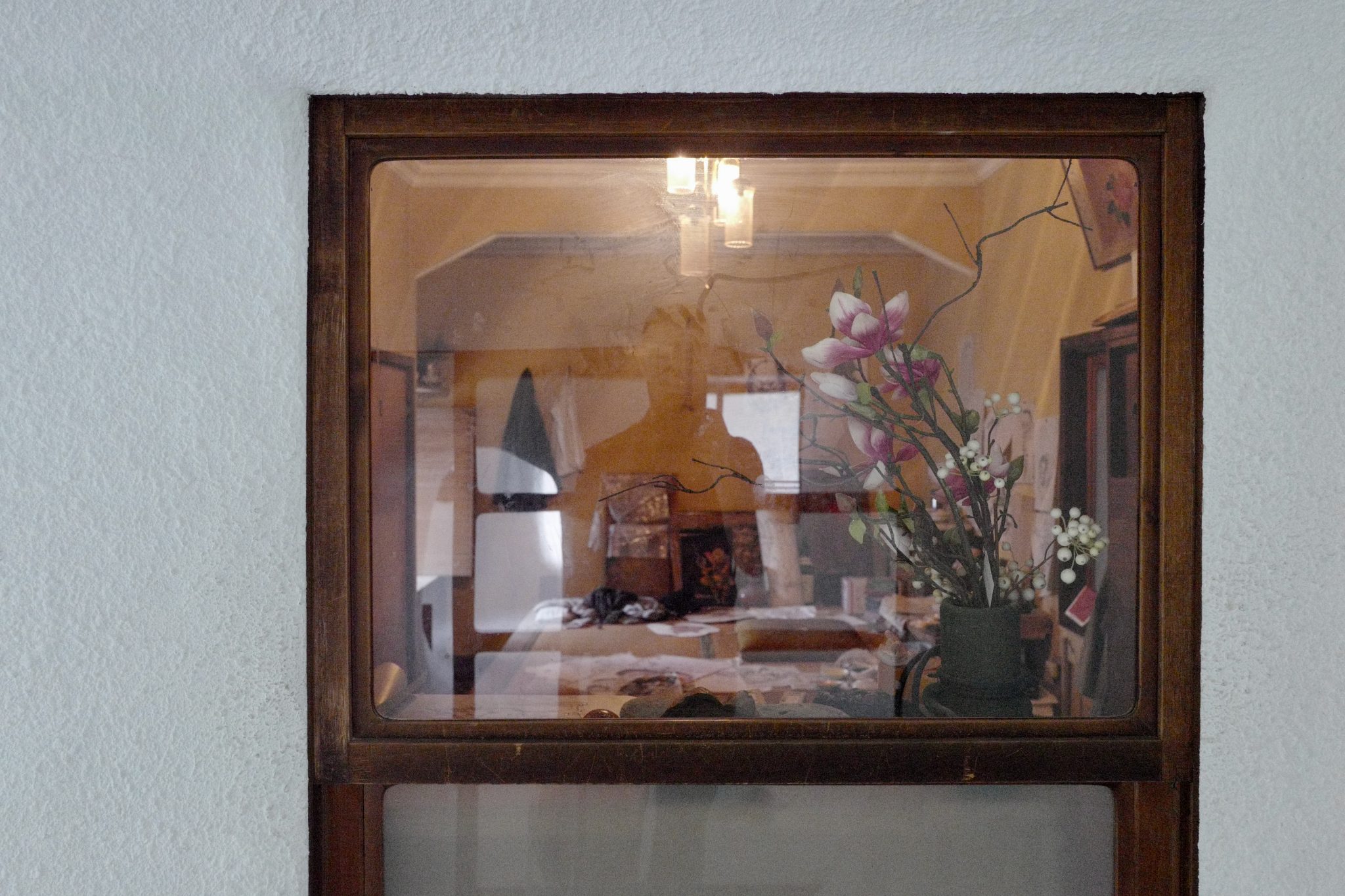
This house was even more elaborately entombed in a warren of passages which bisected the house like an alien host. In the middle of the house, a single room had been left as it was with just a window to view its entombed contents. It was really rather eerie.
For dinner, I ended up at a family restaurant where I ate a rather unsatisfying meal before heading back to Irifune. I wrote this post listing to the howling winds outside the rattling windows of my room. So far so good and fingers crossed for clear weather tomorrow.
Information
- Distance walked: 14.7km / 19,952 steps
- Temples visited: 3
- Accommodation near Tonosho Port:
- New Port Inn (ビジネスホテルニューポート)
- Okido Hotel (小豆島温泉 オーキドホテル)
- Asahiya Ryokan (旭屋旅館)
- Hitomiso Hotel (ひとみ荘)
- Kikuya Ryokan (喜久家旅館)
- Accommodation near Angel Road:
- Irifune (海辺の宿 入舟) – where I stayed
- Hotel Matsukaze (小豆島シーサイドホテル松風)
- Hotel New Umikaze (ホテルニュー海風)
- Kairo Hotel (天空ホテル 海廬)
- Shodoshima International Hotel (小豆島国際ホテル)
- Frequently asked questions

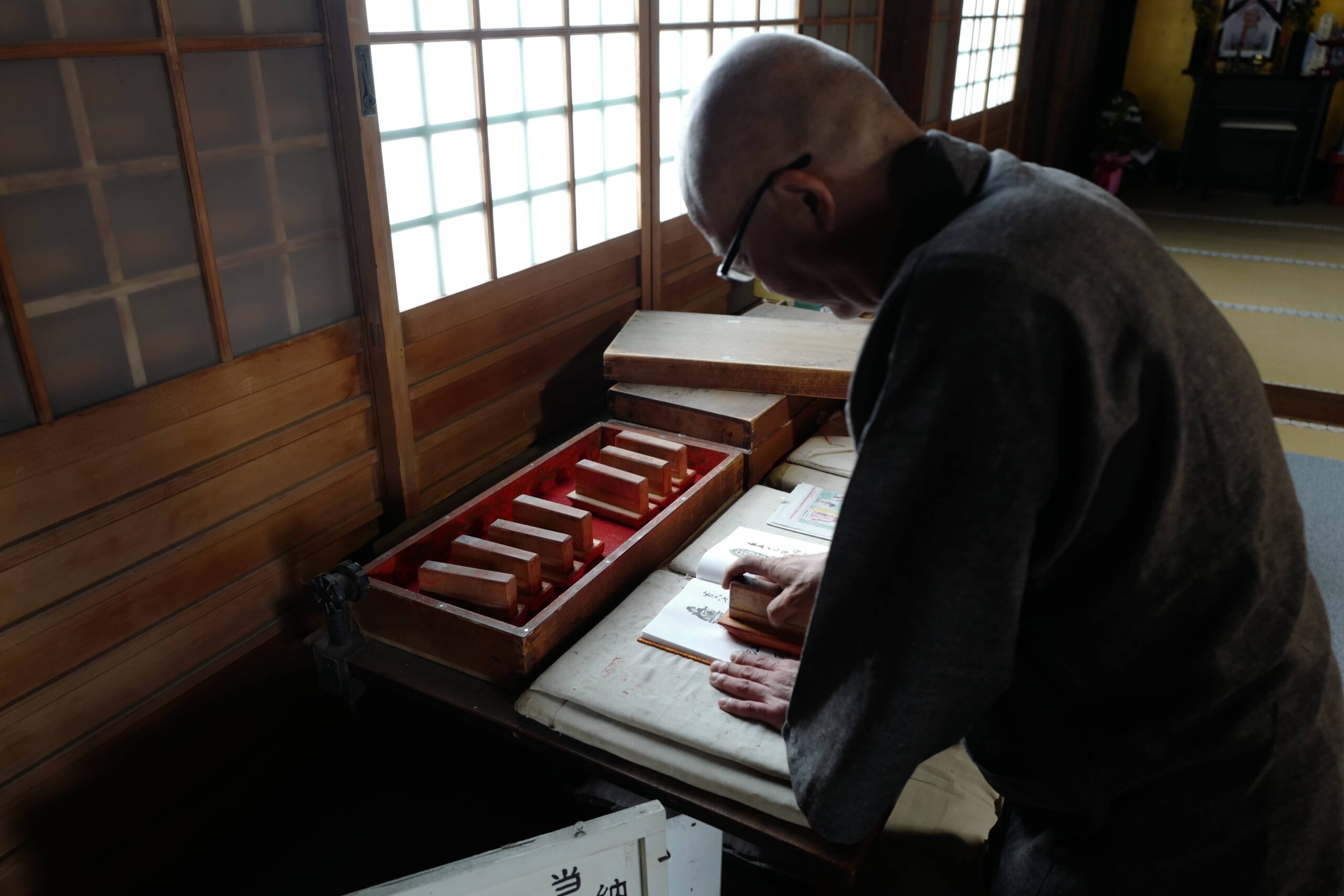
Reply